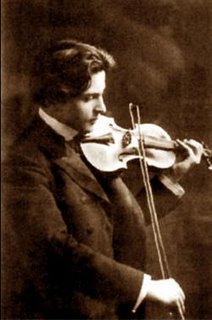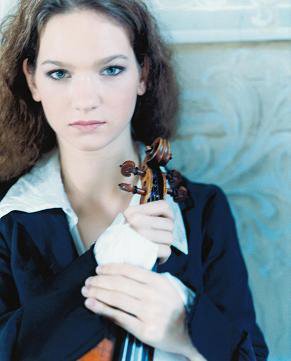A Survey of Enescu Symphony Cycles
► An Index of ionarts Discographies
Continuing my discographies, while in the middle of a massive update of the Bach Organ Cycle Survey, I thought I'd squeeze in one with the symphonies of George Enescu, not the least because on the outset it appeared to be a bit of a quicky, with seemingly just five (?) sets out there. Even cursory research revealed this to be an illusion. There are, from what I’ve found out so far, eight cycles, and who knows what might yet turn up, with the help of the readers.
It is prompted, quite obviously, by the appearance of the most recent set, which Cristian Măcelaru managed to have appear on DG. (Quite neat, how DG likes to add nifty off-the-beaten-path cycles to their catalogue, like Franz Schmidt with Paavo Järvi or Carl Nielsen with Fabio Luisi, so long as they don't have to pay for it.)
As always, every such discographic post, even one of such limited scope as this one, is also a plea to generously inclined readers with more information and knowledge of the subject than I have to lend a helping hand correcting my mistakes or filling data-lacunae. I am explicitly grateful for any such pointers, hinters, and corrections and apologize for any bloomers. (Preferably on Twitter, where I'll read the comment much sooner than here, but either works!) Where good reviews have appeared by serious reviewers, links are included.
Now what’s in a symphony cycle? That’s often a question, when it comes to these recorded surveys, be it in Schubert (1-7, 9 or more?), Bruckner (1-9 or all 11?), Mahler (Lied von der Erde or not? Blumine?). In Enescu, too, it’s far less straightforward than the obvious answer – Symphonies One through Three – might seem. There are, after all, two more symphonies that Enescu never finished but which have since been presented in performing versions by composer and musicologist Pascal Bentoiu. To convolute things further, there are four “Study Symphonies”, a Symphonia concertante (for Cello and Orchestra), a Symphonic Suite for Orchestra (the Poème Roumain), and the great symphonic poem Vox maris for tenor, three-part choir and orchestra.
Among other orchestral works that are popularly (if that’s the right word) coupled with the symphonies, are his other orchestral works. They include primarily the two Romanian Rhapsodies, of which the first might be his most popular works, three Orchestral Suites, the Overture on Popular Romanian Themes, two Intermezzi for strings, “Three Overtures for orchestra”, the Tragic Overture, the Triumphal Overture, a Sonata for Orchestra, the Andantino from an orchestral suite, “Four Divertissements for orchestra”, a Pastorale-Fantaisie for orchestra, the symphonic poem Isis (also completed by Pascal Bentoiu), and the Suite chatelaine for orchestra (completed by Remus Georgescu).
The three numbered, completed works appear to be just scratching the surface of the deep Enescu-waters. For the purposes of this survey, however, Nos. 1 to 3 is what counts and will be considered complete. Boni and links to other works are, however, included at the end of it.
The fact that much of Enescu’s music can appear as episodic is, in part, probably as possibly an outcome of our own lack of familiarity with these works and Enescu’s idiom, as of the performances themselves. Enescu needs attention, more often than he demands it. As such, the listening experience either requires more concentration and commitment from the listener than listening to yet another performance of La Mer, or greater exposure. But like other Surprised-by-Beauty composers (Martinů comes to mind), Enescu pays back that investment – and more consistently than some. Dip your ears – maybe start with the Third Symphony or Vox maris, among the orchestral works; the First Rhapsody is almost too easy to like, do that a few times, and see where it takes you if you haven’t arrived yet.
Orchestra names: Usually, I use standardized English names for orchestras, but sometiemes I like the original, because it is pithier. Or I use both, to confuse people. In any case, the George Enescu State Philhamonic Bucharest Filarmonica George Enescu (GESP) is the Filarmonica George Enescu in Romanian. The Orchestra Națională Radio used to be Orchestra of The Romanian Radio and Television and, in English, is now the Romanian Radio National Orchestra (or National Radio Orchestra of Romania, RRNO). For the Iași “Moldova” Philharmonic Orchestra (also: Moldova Philharmonic or Philharmonia Moldova) I used its Romanian name: Filarmonica Moldova Iași, which strikes me as less clunky. Ditto the Timisoara Banatul Philharmonic Orchestra, which is either refered to here as the Filarmonica Banatul (din Timișoara) or more simply as the Bantul PO.
Enjoy and leave a comment in some form!

Edits Date: TBA
(Survey begins after the break, if you didn't land on this page directly)





































































